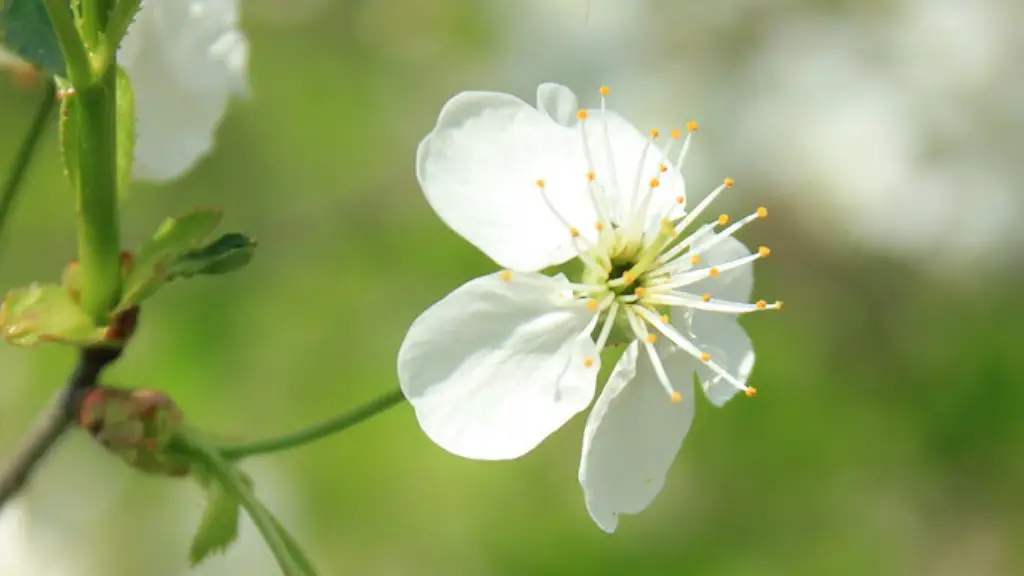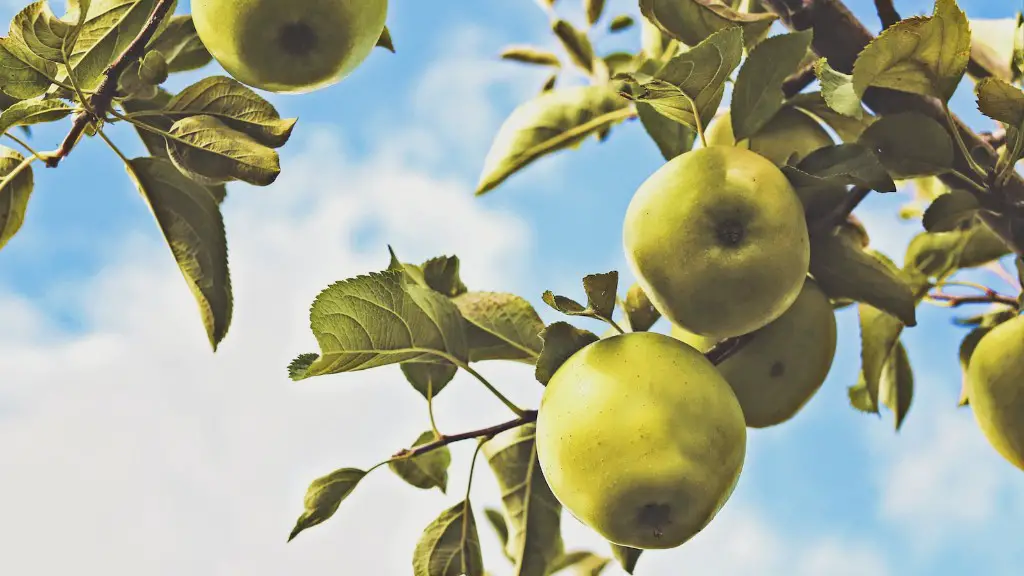Training an apple tree against a fence can be an effective way to maximize apple production while also keeping the tree located where needed. It is relatively simple, yet takes some effort, to get the best results possible. The first step is to locate the right fence and the right tree. The tree should be a young variety with a single stem and strong, flexible branches. The fence should be preferably made of wire, as this will provide more support for the branches as they are trained.
Once the correct tree and fence have been found, pruning should begin. It is important to start pruning when the tree is young, as this will set up the correct branch structure that will produce the desired amount of apples over time. Pruning should be done a few times during the season to keep the shape of the tree controlled. The branches should be cut at angles that keep them close to the fence, as this will help provide more support for the tree.
It is also important to tie the branches to the fencing appropriately. Loose ties can slip and cause damage to the limbs which can eventually lead to decreased apple production. Keeping the ties tight as the tree grows will ensure better support and reduce the risk of any damage from the fence. After the ties are in place, controlling the height of the tree or spreading out the branches can be done to best fit the space available.
Regular maintenance is key for training an apple tree against a fence. Checking for pests, cutting off dead branches, and giving the tree a chance to breathe are all important steps to successful apple production. As the tree matures, pruning should not be forgotten, as it can still be beneficial even when the tree is older. A balanced fertilizing routine should also be implemented to encourage better growth and fruit production.
Training an apple tree against a fence can take some time and effort, but the end result will often be a productive and attractive tree. Following the steps outlined above and giving the tree adequate care will lead to successful results in the years to come.
Fencing
When choosing a fence for training an apple tree, one has to keep in mind the needs of both the tree and the fence when selecting the proper material. Wire fencing is typically the best option, as it provides the needed support for the branches and can be easily secured to other supports. Wood fencing is an option, but it does require extra care and maintenance as it is not as durable, and harder to secure the tree to.
Before purchasing or constructing a fence, one should assess the size of the tree and the environment, as this will dictate the magnitude of the project. A larger tree with a fast growth rate may require a more robust fence, while a small tree and slower growth rate will require a less secure support.
The height of the fence should also be taken into consideration. An average of 8-10 feet is generally enough to keep the branches supported, with the top of the fence near the tips of the branches when upright. If the tree will require trimming, then shorter fences could be used as the canopy of the tree should be kept lower than the fence.
The type of fence will also dictate the amount of space needed between the tree and fence. Wire fencing will require some distance between the tree and the fence, as the limbs should be able to move and breathe, but not contact the fence. Wood fencing should be several inches away to allow for proper air circulation for the tree.
The final step when preparing the fence is to create a low-stakes tieback system to keep the limbs from slipping or slipping out of bounds. This can be done using pieces of wire or string that is tied to stakes placed fronting the fence then to the limbs.
Pruning
It is essential to start pruning a tree when it is still young, as this will set the shape and structure of the tree. Pruning should be done several times throughout the year to control the shape of it and ensure that it follows the shape of the fence. The main pruning should be done in the winter season, while secondary pruning should take place during the summer.
When pruning to train an apple tree against a fence, one should make sure to cut the branches at specific angles that keep the limbs close to the fence. This will allow the fence to better support the tree and produce a better shape. The type of pruning will also vary based on the size of the tree and the season, but the main focus is to keep a balanced shape that is within the shape of the fence.
Tools to properly prune the tree should be of good quality, as dull tools can actually cause damage to the limbs. Preferably, one should use pruning shears or lopping shears. If one is just starting out with pruning, pruning spurs or snips can be used to create a general shape that can then be refined with the shears.
When pruning, one should avoid taking too much of the tree and thinning it excessively. A little pruning is good, as it will help keep the tree shaped in the desired area, and allow it to get some light and air between the fence, but one should try not to thin the tree too much. A general thinning of no more than 25-30% of the tree is enough, with some strong healthy branches left in place to ensure a robust structure.
Tying the Branches
Using ties to secure the tree to the fence is perhaps the most important aspect of training a tree, as this will be the main support for the tree itself. When it comes to tying, one should make sure to use strong, secure ties that will not slip as the tree grows. Soft cloth ties are also an option, but they can cause damage to the limbs if not properly used.
Tying should be done at the base of the stem, as well as near the tips of the branches. Make sure to use enough ties to ensure a secure support and keep the tree in the desired shape. It is also important to check the ties every now and then to make sure they are still secure.
When it comes to controlling the height of the tree, one can either use branches or tiebacks to secure the desired height. Branches can be evenly spaced and cut approximatively the same size to help keep the shape consistent. Tiebacks should be done near the tips of the limbs and used to keep the tree from getting too tall, as this could make pruning and maintenance difficult.
It is also important to keep the shape of the tree open to enable enough light and air into the tree. This will keep the structure healthy, and help with the production of fruit. One should try to fan out the branches and leave enough room between them to encourage more growth.
Maintenance
Making sure the tree is properly taken care of will make all the difference when it comes to apple production. Examining the tree at least once a week is important as this will help identify any issues before they get too serious. One should also fertilize regularly to ensure proper nutrition is being delivered to the tree. Utilizing a combination of organic mulch and slow-release fertilizers is usually a good choice.
Checking for pests is also something that should be done on a consistent basis. If any pests are seen, proper treatments should be done to prevent the infestation from getting any worse. Lastly, pruning should still be done regularly as the tree matures, as this will keep the shape consistent and productive.
Training an apple tree against a fence requires some dedication and effort. Following the directions outlined here and regularly assessing the tree will lead to a beautiful and productive tree. With the right care and attention, this tree will thrive and produce quality apples for years to come.




